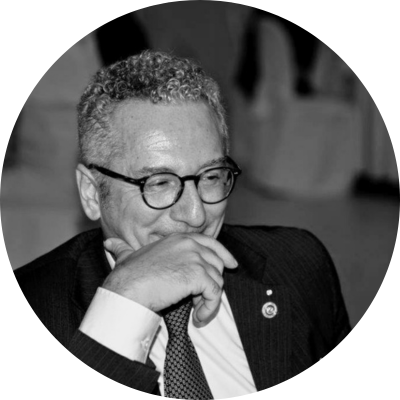
Engaging authorities in peacebuilding: What works and why
Engaging authorities in peacebuilding: What works and why
If the practice of engaging government representatives in peacebuilding has a long history, it seems that such efforts have been nowadays formalised in ways that were not common just a few years ago. Today, peacebuilding projects from Burundi to Iraq, from Kenya to Lebanon, regularly integrate activities targeting authorities as a necessary mechanism to achieve impact. Yet, the evidence of whether these actually contribute to impact is still mixed at best, suggesting that organisations should really be more careful about designing and implementing such strategies.
Not all attempts at engaging government representatives are effective, in other words, so much so, in fact, that a review of any number of recent peacebuilding projects will, arguably, be likely to show that such attempts result in failure much more often than in success. The problem is not represented by the failures, however, but by the general lack of evidence for indicating what works and why.
Take a project that seeks to promote perceptions of security among communities in a post-conflict or otherwise fragile context—Burundi could be one example, and also Iraq and Uzbekistan. These projects usually already foresee that security forces representatives will need to be engaged. A common programmatic strategy in such initiatives would therefore be to organize consultative meetings that involve the police, or the military, and community leaders and civil society organizations (CSOs). Such meetings, the logic goes, would first of all pierce through “us vs. them” narratives, by challenging stereotypes and fostering individual relationships. Some projects will then have even higher ambitions: in some, consultations will lead to issue-specific collaborations, thus building confidence and trust between communities and police (where, the assumption generally is, none existed before); in others, consultations will produce trust, and trust will lead to changes in standard practices, or even policies.
On paper, projects that include such strategies have (generally) sound logic—or, to be more technical, they feature coherent theories of change, where impact is the result of a formula that combines two broad strategies. The first is the achievement of a set of outcomes related to self-efficacy (i.e., improving people’s belief in their ability to succeed in specific situations). And the second is the achievement of a set of outcomes that are related to improving relations between CSOs, authorities and community representatives.
In practice, however, the evidence from these interventions can be very positive, but still not enough to claim that these theories of change are entirely valid—that, in other words, they contribute to impact.
For instance, the evaluations that AP has been recently leading found positive findings related to self-efficacy: by and large, peacebuilding projects were quite effective in increasing the skills, knowledge and confidence of CSOs in particular (at least insofar as the training components of any given project were designed based on a context and needs assessment, and adequately resourced). Usually, there was also a trail of evidence that points to the fact that participants appreciate and use their newly acquired skills and knowledge.
Relationships were a different matter. Engaging authorities was, almost without exception, difficult because of their lack of interest or availability. Many projects successfully overcame this challenge by relying on officials motivated by personal interests or values (so-called “champions”). Systematic interactions were seldom or sustainably established: instead, where practices changed, this happened at individual level—and the same applied to trust. Overall, the evidence points to limited contributions to impact.
If, then, peacebuilding organizations decide to engage authorities in their interventions—a decision that, it should be noted, is very much warranted in many contexts—they should do so based on a more nuanced and careful consideration of what the evidence suggests that it works (and, conversely, what it suggests that it does not work). In this regard, four considerations are offered.
Which authorities. Peacebuilding projects often do not give enough attention to the authorities that need to be engaged, and consequently end up confused about which specific ministries, agencies or offices they ought to work in order to achieve intended outcomes. This leads to insufficiently articulated strategies that fail to consider how the practices of individual officers are affected by directives from their national counterparts, or by the policies and oversight exercised by relevant ministries or legislative bodies—and therefore do not engage the right people or institutions.
Mistrust, distrust or lack of trust. Projects often do not address what the specific challenges in relation to trust actually are. In some cases, communities and authorities lack trust in the sense that they are not used to working together on an issue. In others, there might be only mistrust: a sense that authorities are not behaving fairly, but where the authority of the government is still accepted. Finally, distrust is where communities harbor sentiments of neglect and resentment towards authorities, effectively blocking constructive engagement. Where the level of trust (and lack thereof) is not sufficiently diagnosed, this leads to cookie-cutter strategies, which can be effective, but not impactful.
What mandates. Finally, projects seldom take into account the mandates that determine accountability between different government bodies, or between the latter and communities. Often, there is a vague awareness of the hierarchies that exist between local and national institutions, or how these relate to each other. Most often, this leads to a tendency to believe that efforts to influence a specific practice or policy can be successful simply by engaging the specific body responsible for it. This leads to siloed strategies, however, which fail to account for the obstacles (but also the opportunities) that come from complex governance systems.
Ultimately, the role that government plays in advancing or blocking peacebuilding processes has always been a nexus point for change: many diverse interests converge on it, which, if adequately balanced, can effectively transform a conflict and propel communities from violent confrontation to sustainable peace. Yet, working with authorities remains difficult, as the power they hold makes them incredibly resistant to change.
If the debate on whether it is better to work with the grain or against the grain cannot be settled yet, there is, however, surely enough evidence to suggests that considering some additional elements of analysis—around which authorities to engage, how best to describe the level of trust between communities and authorities, and what specific mandates can be leveraged to change government practices—can help to increase the impact of peacebuilding projects.































